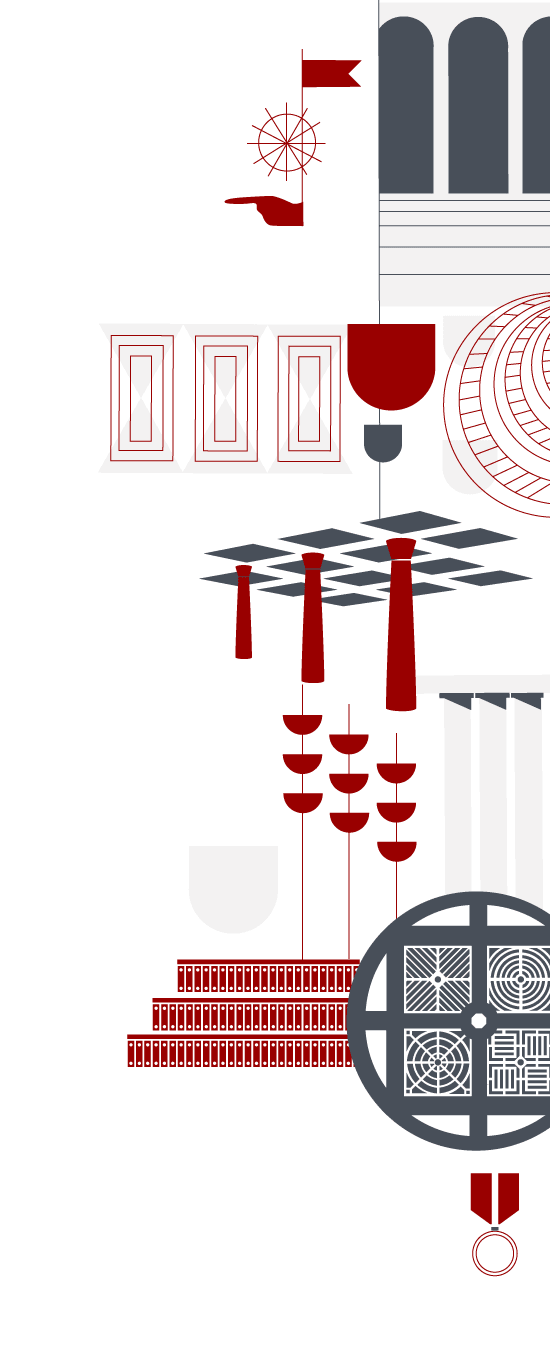
The History of Padua
Padua claims to be the oldest city in northern Italy. According to a tradition which goes back at least to Virgil’s Aeneid, it was founded in 1183 BC by the Trojan prince Antenor, who is believed to have led the people of Eneti, or Veneti, from Paphlagonia (in the north of what is now Turkey) to Italy. In 1274, the authorities of Padua found a large stone sarcophagus in the city centre, and declared that it contained the remains of Antenor. Patavium, as Padua was called by the Romans, was inhabited by the Veneti, and had been known as a Roman municipium since 45 BC.
Padua, in common with the rest of north-east Italy, suffered severely from the invasion of the Huns under Attila (452 AD). It then fell under the control of the Gothic kings Odoacer and Theodoric the Great, and later of the Lombards. In the early 7th century (602 AD), after a long and bloody siege, Padua was stormed and burned by Agilulf, the Lombard king. The antiquity of Padua was annihilated: the ruins of an amphitheatre and some bridge foundations are all that remain today of Roman Padua.
After a period of Frankish and Episcopal supremacy, a constitution was established by the citizens in the 11th century. It was composed of a general council or legislative assembly, and a credenza, or executive body. The great families of D'Este and Da Romano from Camposampiero, nort of Padua, then became more powerful and divided up the city among themselves. The citizens, in order to protect their liberties, were obliged to elect a potestà (governor), and their first choice fell on one of the D’Este family.
From 1236 to 1256, Padua was ruled by the tyrant Ezzelino da Romano, who practised frightful cruelties on the inhabitants. Ezzelino was unseated in June 1256 without civilian bloodshed, thanks to Pope Alexander IV, and the city then enjoyed a period of calm and prosperity: the University, founded in 1222, flourished in the 13th century. Jacopo da Carrara was elected Seigneur of Padua in 1318. From then until 1405, nine members of the da Carrara family (also known as the Carraresi) succeeded one another as lords of the city.
In 1405, Padua passed under the rule of the Most Serene Republic of Venice, and mainly remained so until the fall of Venice in 1797. Over the years of its rule, the Serenissima had fortified Padua with new walls, which had a series of six gates (porte) or monumental arches, which exist to this day.
In 1797, the Venetian Republic was swept away with the Treaty of Campoformio, and Padua was ceded to the Austrian Empire. After the fall of Napoleon in 1814, it became part of the Kingdom of Lombardy-Venetia. However, the Austrians were not popular in progressive circles in northern Italy: in Padua, the year of revolutions of 1848 saw a student revolt which, on February 8, turned the University and Caffè Pedrocchi into battlegrounds, on which students and ordinary Paduans fought side by side. In 1866, after the Third War of Independence, Italy was able to expel the Austrians from the old Venetian Republic, and Padua and the rest of the Veneto were annexed to the recently united Kingdom of Italy.
When Italy entered the First World War in 1915, Padua was chosen as the main command post of the Italian Army in the horth. After Italy's defeat in the battle of Caporetto in autumn 1917, the front line was situated on the river Piave, and the city was within range of the Austrian artillery, but a year later the danger was removed. In late October 1918, the Italian Army won the decisive battle of Vittorio Veneto and the Austrian forces collapsed. The Armistice was signed at Villa Giusti, just outside Padua, on November 3 1918, and Austria-Hungary surrendered to Italy.
In the years immediately following the First World War, the city of Padua developed outside its historical boundaries and its population grew. The city however was still subject to disorder and unrest, and war veterans struggled to re-enter civilian life. Many supported a new political movement: Fascism. As in other parts of Italy, in Padua too the Fascist party soon came to be seen as the defender of property and order against revolution. New buildings, in the typical architecture of the time, sprang up in the city. Examples are the buildings round Piazza Insurrezione (once Piazza Spalato), the railway station, the new part of the town hall, and part of the Palazzo del Bo, hosting the University.
Following Italy’s defeat in the Second World War, Padua became part of the Italian Social Republic, the puppet state of the German occupiers. The city hosted the Ministry of Public Instruction of the new state, as well as a military command post and a military airport.
During the Resistenza, Italian partisans were very active against both the new Fascist rule and the Germans, and one of the leaders was Concetto Marchesi, Rector of the University. Padua was bombed several times by Allied aircraft, and it was not until spring 1945 that the city was finally liberated by partisans and foreign troops. A small Commonwealth War Cemetery was created in the western part of the city, in memory of the sacrifice of many of these troops.
After the war, the city developed rapidly, reflecting the Veneto’s rise - from the poorest region in northern Italy to one of the richest and most active in modern Italy.


